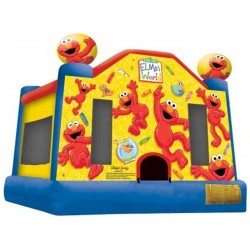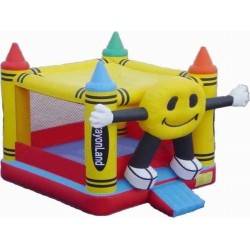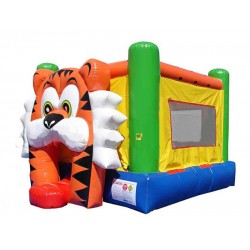Can a jumping castle be set up on concrete?

Setting up a jumping castle involves choosing a suitable location that ensures both safety and stability. While grass and soft ground are commonly preferred, you might wonder if a jumping castle can be set up on concrete. Here’s what you need to know about setting up a jumping castle on a concrete surface:
1. Stability and Safety Concerns
Concrete surfaces are much harder and less forgiving than grass or turf. Setting up a jumping castle on concrete presents several challenges:
- Impact Absorption: Concrete does not absorb impacts, which increases the risk of injuries if children fall or collide with hard surfaces. This lack of cushioning makes concrete less ideal for safe bouncing play.
- Anchor Points: Jumping castles need to be securely anchored to prevent them from moving or tipping over. On concrete, special anchor systems, such as weighted bags or sandbags, must be used instead of stakes that are typically used in softer surfaces.
- Surface Protection: The rough texture of concrete can potentially damage the jumping castle's material. To prevent wear and tear, protective barriers or mats should be placed underneath the castle to safeguard both the castle and the concrete surface.
2. Recommended Practices for Setting Up on Concrete
If setting up a jumping castle on concrete is necessary, follow these recommended practices to ensure safety and protect the equipment:
- Use Protective Mats: Place thick, high-quality inflatable or foam mats under the jumping castle to create a cushioning effect and protect both the castle and the concrete surface.
- Secure Anchoring: Employ appropriate anchoring methods such as sandbags or weighted straps to firmly secure the jumping castle in place. Consult with the rental company for the best anchoring solutions for concrete surfaces.
- Inspect Regularly: Regularly check the condition of the jumping castle and the protective mats. Ensure that there are no signs of damage or wear that could compromise safety.
- Supervision: Maintain vigilant supervision of children using the jumping castle. Ensure that the play area is monitored closely to prevent accidents and manage the activity effectively.
3. Alternative Surface Considerations
If possible, consider alternative surfaces for setting up the jumping castle. Soft, grass-covered areas are ideal for providing natural cushioning and reducing the risk of injuries. If setting up on a softer surface isn’t feasible, evaluate other options such as turf or rubberized playground surfaces that offer better impact absorption than concrete.
Conclusion
While it is technically possible to set up a jumping castle on concrete, it requires additional precautions to ensure safety and protect the equipment. Concrete surfaces are harder and lack natural cushioning, making them less suitable for bouncing activities. By using protective mats, securing the castle properly, and maintaining close supervision, you can mitigate some of the risks associated with setting up a jumping castle on concrete. Whenever possible, opt for a softer surface to ensure a safer and more enjoyable experience for all participants.



